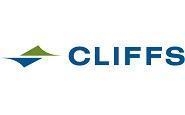Prices

April 25, 2019
Cleveland Cliffs: Welcome to the New Normal
Written by Sandy Williams
The recent mining accident in Brazil leading to lost production of iron ore at Vale is “shaping up to be a multi-year shortage of iron ore and pellets,” said Cleveland Cliffs CEO Lourenco Goncalves during earnings remarks on Thursday.
“The catastrophic events in Brazil have provoked a radical change in the supply-demand dynamics of iron ore and pellets in the main markets and consumption hubs outside the United States, particularly in China, Europe, South Korea and Japan,” said Goncalves. “Furthermore, there’s no easy solution for the significant problems created by these catastrophic events. And it is completely unreasonable to expect things to go back to the previous stable business environment.
“…The world is now entering in an extended period of time characterized by massive shortages of iron ore and pellets, affecting virtually all markets outside the United States. And there is no solution in sight to address this, at least for a few years. Going forward, that’s the new normal. Welcome to the new normal.”
Goncalves said the mining and pelletizing operations at Cliffs remain in good shape. The HBI project in Toledo is on track and on budget for completion in mid-2020. The DRI project at Northshore is close to completion and will produce DR grade pellets on a commercial scale at a rate of up to 3.5 million long tons per year. The DR grade pellets are 67.3% Fe and 2% silica. Cliffs expects sales of 20 million long tons for 2019 including 500,000 long tons of DR grade pellets to be delivered from the North Shore pellet plant in Minnesota to the HBI plant in Toledo during the third quarter.
“While steel pricing has declined from its peak, the hunger for our pellets has not,” said Goncalves.
Cliffs believes that U.S. and global steel prices will improve, “driven by the new normal for iron ore and pellets with scrap ultimately following the trend dictated by the new normal. That should allow the domestic mills to increase the price they charge for steel in United States. And by doing so, avoid a profit squeeze that would otherwise happen to them caused by more expensive feedstock.”
Goncalves addressed what he noted was a concern by some analysts that increased steel capacity in the U.S. will harm steel prices and the domestic market. The U.S. will continue to be a manufacturing country and, therefore, the demand for steel will continue to be strong, he said.
“On the supply side, the entire history of the steel industry in the United States and Canada for that matter is newer steel facilities replacing older steel facilities. And like always, some marginal players in the United States, in Canada, or in both countries, will become uncompetitive versus newer ones and will naturally fade away. So, the fear of the supply glut is definitely exaggerated.”
The fact that the U.S. continues to import steel shows that there is underlying domestic demand and room for fair priced steel. In addition to the traditional barriers of antidumping and countervailing duties, the U.S. now has tariffs and quotas that make it “abundantly clear that the United States domestic market is no longer the playground for cheaters.”
Eventually imports from China made from environmentally unfriendly sinter and blast furnaces, “will be treated as poison and China will no longer get the free pass they still get today,” said Goncalves. “That being said, you will always have a marginal high cost player, either a less competitive furnace within the U.S. or an importer that has to pay a tariff to keep the price at a reasonable level.”
The shift to EAFs will increase the demand for pellets and for scrap. “With the way the market is presently situated, by 2021, there will be a 3 million long ton shortage of pellets in the Great Lakes. By that time our HBI number one plant will be consuming at its full pellet supply need of 2.8 million long tons, leaving one or two blast furnaces short-handed and unable to run,” he said.
Goncalves said there is no good solution for those blast furnaces, considering the costs of sourcing pellets from outside the Great Lakes region.
Goncalves said he will not invest in restarting the Empire mine to fill the void “unless we can secure a long-term take or pay-guaranteed contract at a minimum price with a client to lock in the internal rate of return for the benefit of Cleveland Cliffs.” When certain contracts expire at the end of 2020, “someone among the existing blast furnaces will be left starving.”
The Empire mine could produce 3.2-3.3 million tons a year very easily, he said, but the taconite will remain in the ground unless Cliffs can make a profitable deal.
Goncalves concluded by restating that the iron ore and pellet shortage is the new normal that will not be fixed soon. “What saves your money is a good plan and good execution.”






